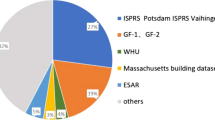Abstract
Semantic segmentation is a fundamental task in computer vision and image scenery detection. Many applications, such as urban planning, change detection, and environmental monitoring require accurate segmentation. Hence, most segmentation tasks are performed by humans. Currently, with the growth of deep convolutional neural network (DCNN), there are many works aimed to find the best network architecture fitting for this task. In this work, the GoogLeNet classifier is used to perform better segmentation as well as a classification for satellite images. The Wiener filter is used here for image denoising. Data Augmentation is performed to extract high information about the input picture. The output of the above steps helps in classification i.e. it identifies the scenery of the input image with four labels. The result shows that the GoogLeNet based image classification has reduced error rate and it also increases the accuracy of output. Additionally, the efficiency of the Wiener filters also described clearly in the result.










Similar content being viewed by others
Explore related subjects
Discover the latest articles and news from researchers in related subjects, suggested using machine learning.Change history
06 July 2022
This article has been retracted. Please see the Retraction Notice for more detail: https://doi.org/10.1007/s12652-022-04266-1
References
Alizadeh-Naeini A, Babadi M, Mirzadeh SMJ, Amini S (2018) Particle swarm optimization for object-based feature selection of VHSR satellite images. IEEE Geosci Remote Sens Lett 15:379–383
Bai Y, Liu Y, Zhang Q, Jia L, Gui Z (2018) Image denoising via an improved non-local total variation model. J Eng 2018:745–752
Behera SK, Rath AK, Mahapatra A et al (2020) Identification, classification & grading of fruits using machine learning & computer intelligence: a review. J Ambient Intell Human Comput. https://doi.org/10.1007/s12652-020-01865-8
Chantharaj S, Pornratthanapong K, Chitsinpchayakun P, Panboonyuen T, Vateekul P, Lawavirojwong S, Srestasathiern P, Jitkajornwanich U (2018) Semantic segmentation on medium-resolution satellite images using deep convolutional networks with remote sensing derived indices. In: 2018 15th International joint conference on computer science and software engineering (JCSSE)
Emilio G, Tabik S, Alcaraz-Segura D, Cabello J, Herrera F (2017) Deep-learning Versus OBIA for Scattered Shrub Detection with Google Earth Imagery: Ziziphus lotus as Case Study. Remote Sens 9:1220
Feizizadeh B (2018) A novel approach of fuzzy Dempster-Shafer theory for spatial uncertainty analysis and accuracy assessment of object-based image classification. IEEE Geosci Remote Sens Lett 15(1):18–22
Hamad AH, Muhamad HO, Yaba SP (2015) De-noising of medical images by using some filters. Int J Biotechnol Res 2(2):22–25
Jia H, Ma J, Song W (2019) Multilevel thresholding segmentation for color image using modified moth-flame optimization. IEEE Access 7:44097–44134
Jiao L, Liang M, Chen H, Yang S, Liu H, Cao X (2017) Deep fully convolutional network-based spatial distribution prediction for hyperspectral image classification. IEEE Trans Geosci Remote Sens 55:5585–5599
Ma X, Wu P, Shen H (2019) A nonlinear guided filter for polarimetric SAR image despeckling. IEEE Trans Geosci Remote Sens 57(4):1918–1927
Manju S, Helenprabha K (2019) A structured support vector machine for hyperspectral satellite image segmentation and classification based on modified swarm optimization approach. J Ambient Intell Human Comput. https://doi.org/10.1007/s12652-019-01643-1
Persello C, Stein A (2017) Deep fully convolutional networks for the detection of informal settlements in VHR images. IEEE Geosci Remote Sens Lett 14(12):2325–2329
Riaz S, Arshad A, Jiao L (2018) Rough noise-filtered easy ensemble for software fault prediction. IEEE Access 6:46886–46899
Su T (2019) Scale-variable region-merging for high-resolution remote sensing image segmentation. ISPRS J Photogramm Remote Sens 147:319–334
Sun X, Zhang L, Wang Z, Chang J, Yao Y, Li P, Zimmermann R (2018) Scene categorization using deeply learned gaze shifting kernel. IEEE Trans Cybern 49:2156–2167
Wu C, Li Y, Zhao Z et al (2020) Research on image classification method of features of combinatorial convolution. J Ambient Intell Human Comput 11:2913–2923. https://doi.org/10.1007/s12652-019-01433-9
Xu Z, Zhang L, Xing M, von Deneen KM, Ran L (2015) Interesting components detection for space satellites from inverse synthetic aperture radar image via feature probabilistic estimation”. IET Image Process 9(6):506–515
Zhang C, Pan X, Hg Li A, Gardiner IS, Hare J, Atkinson PM (2018) A hybrid MLP-CNN classifier for very fine resolution remotely sensed image classification. ISPRS J Photogramm Remote Sens 140:133–144
Zhou Y, Chen Y, Feng L, Zhang X, Shen Z, Zho X (2018) Supervised and adaptive feature weighting for object-based classification on satellite images. IEEE J Select Topics Appl Earth Obs Remote Sens 11(9):3224–3234
Author information
Authors and Affiliations
Corresponding author
Additional information
Publisher's Note
Springer Nature remains neutral with regard to jurisdictional claims in published maps and institutional affiliations.
This article has been retracted. Please see the retraction notice for more detail: https://doi.org/10.1007/s12652-022-04266-1"
About this article
Cite this article
Poomani, M., Sutha, J. & Soundar, K.R. RETRACTED ARTICLE: Wiener filter based deep convolutional network approach for classification of satellite images. J Ambient Intell Human Comput 12, 7343–7351 (2021). https://doi.org/10.1007/s12652-020-02410-3
Received:
Accepted:
Published:
Issue Date:
DOI: https://doi.org/10.1007/s12652-020-02410-3




